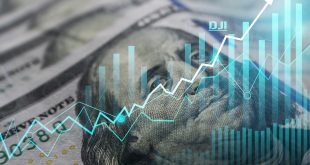U.S. stock index futures ticked higher Monday morning as markets brace for a high-stakes week that includes the closely contested U.S. presidential election and a Federal Reserve policy meeting. At 06:10 ET, Dow Jones Futures were up by 60 points (0.1%), S&P 500 Futures rose by 12 points (0.2%), and Nasdaq 100 Futures gained as well, reflecting cautious optimism among investors.
Tech Earnings and Economic Data Set Tone for the Week
The U.S. stock market declined last week, with major indices falling between 1% and 3%, primarily driven by mixed earnings results from tech giants. While several companies reported earnings that surpassed expectations, subdued forecasts from firms like Microsoft and Apple, coupled with anticipated increases in capital spending, weighed on the sector.
Presidential Election and Market Sentiment
As Election Day nears, polls indicate a close race between Donald Trump and Kamala Harris, leading to market caution. A Trump victory could prompt more inflationary policies, potentially impacting dollar strength and Treasury yields. Analysts, including those at Wedbush, point to concerns about a U.S.-China tech trade conflict and tariffs under a possible Trump win, which has sparked some investor unease, especially in the tech sector.
Federal Reserve Meeting and Rate Cut Expectations
The Federal Reserve is widely expected to cut interest rates by 25 basis points following a 50 basis-point cut in September. Despite economic resilience and persistent inflation, Fed Chair Jerome Powell is likely to maintain a cautious tone, avoiding a definitive timeline for further rate cuts. This meeting comes on the heels of Friday’s payroll data, which highlighted a significant slowdown in job growth, further supporting expectations for rate cuts.
Oil Prices Jump as OPEC+ Delays Production Increase
Crude oil prices surged early Monday after OPEC+ announced a delay in its planned December output hike, citing weak demand. By 06:10 ET, Brent crude was up 2.7%, reaching $75.06 per barrel, while WTI rose 2.9%, trading at $71.50. The decision reflects ongoing concerns about demand pressures, particularly from economic challenges in key oil-importing countries like China.
This week promises to be pivotal for market direction, as investors navigate corporate earnings, central bank policy, and political outcomes that could shape the economic landscape for the months ahead.
 Noor Trends News, Technical Analysis, Educational Tools and Recommendations
Noor Trends News, Technical Analysis, Educational Tools and Recommendations





